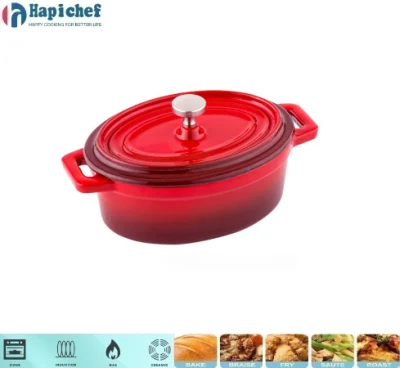Online forums for the cooking-obsessed are a mixed blessing. On the one hand, they can be amazing resources, full of detailed information on all sorts of topics. But they can also expose just how little agreement there often is among experts when you get down to the nitty-gritty details. I've spent hours poring over cast iron cookware sites, only to see some swear that flaxseed oil is the best for seasoning, others throw down for Crisco or lard, and still others say that canola is their go-to. The oven temperatures they use are equally varied, and some advocate convoluted methods that involve repeatedly changing the oven temperature during the seasoning process.
The thing is, we here at Serious Eats use our cast iron cookware all the time, and, after testing countless methods, we've found that most of the complex rules of cast iron are nothing more than superstition. Indeed, we don't do anything complicated to keep our pans in tip-top nonstick shape. Here's the short version of what you need to know: When you get a new cast iron pan, put it through one basic round of seasoning (I'll explain how below), then just...use your pan. Yeah, it really is that simple.
Understanding Seasoning
A cast iron pan is, quite literally, a big hunk of iron molded into the shape of cookware. Iron, on its own, is gunmetal gray and highly reactive, able to rust within minutes in humid air alone. Try to cook in a bare iron pan, and not only will the rusting be a problem, but your food will stick to it as well.
What you need is seasoning.
Seasoning, in this case, has nothing to do with salt or spices. Instead, it describes a hard, protective coating that's formed by heating incredibly thin layers of fat (like oil) on the cast iron. As the fat is heated, it bonds to the metal and to itself in a process called polymerization, as the fat converts into a form of plastic. After enough layers of seasoning have been applied, what you end up with is not a greasy coating but a hard, blackened skin that protects the metal. Fortunately for us cooks, it also has nonstick properties that make even the most stick-prone foods (think: fried eggs) a pleasure when using cast iron.
How to Season a New Cast Iron Pan
You read through our cast iron skillet review, and decided it was time to buy yourself a new pan. Excellent call. Your new cast iron skillet will almost always comes from the factory with some degree of pre-seasoning on it, but you'll generally want to lay down a few more on top of that to make sure it's good. (If you get a vintage skillet that's not in great shape, you'll want to consult our guide to restoring cast iron, which includes instructions on how to strip off old seasoning and rust.) Once you've added your own layers of seasoning, just use the pan, and you'll be good to go for years upon years.
Lodge Cast Iron Skillet
:max_bytes(150000):strip_icc():format(webp)/lodge-pre-seasoned-cast-iron-skillet-d044622e3f254f4c97e3c657753fb8be.jpg)
Step 1: Wash and Dry Your Pan
It's hard to say exactly what happened to that skillet between the time it came off the factory line and when it arrived in your kitchen, so you'll want to wash it before starting to season. Give the pan a good scrub with warm, soapy water, then dry it thoroughly. Even after towel-drying, some surface moisture may remain, so your best bet is to put the pan on a stovetop flame for a minute or two to drive off any lingering water.
Step 2: Rub It All Over With Oil and Buff Well
Now that your pan is clean and dry, rub it all over, inside and out—including the handle—with cooking oil. Here at Serious Eats, we're fans of unsaturated cooking fats, like vegetable, canola, and corn oil, for seasoning our pans. Not only do we always have them on hand, but they work well and are easier to spread than saturated fats, like shortening or lard. There's no need to go out and buy any special oils just for seasoning!*
*For the record, we've found that the often-suggested flaxseed oil produces a fast layer of seasoning, but it has a tendency to flake off with use. We don't recommend it.
The key here is to rub the oil all over, but then buff it so thoroughly that the pan no longer looks even the slightest bit greasy. Even a small amount of excess oil on the pan can pool during seasoning, forming little hardened droplets on your cooking surface, or turn sticky if left unused for a few days.

